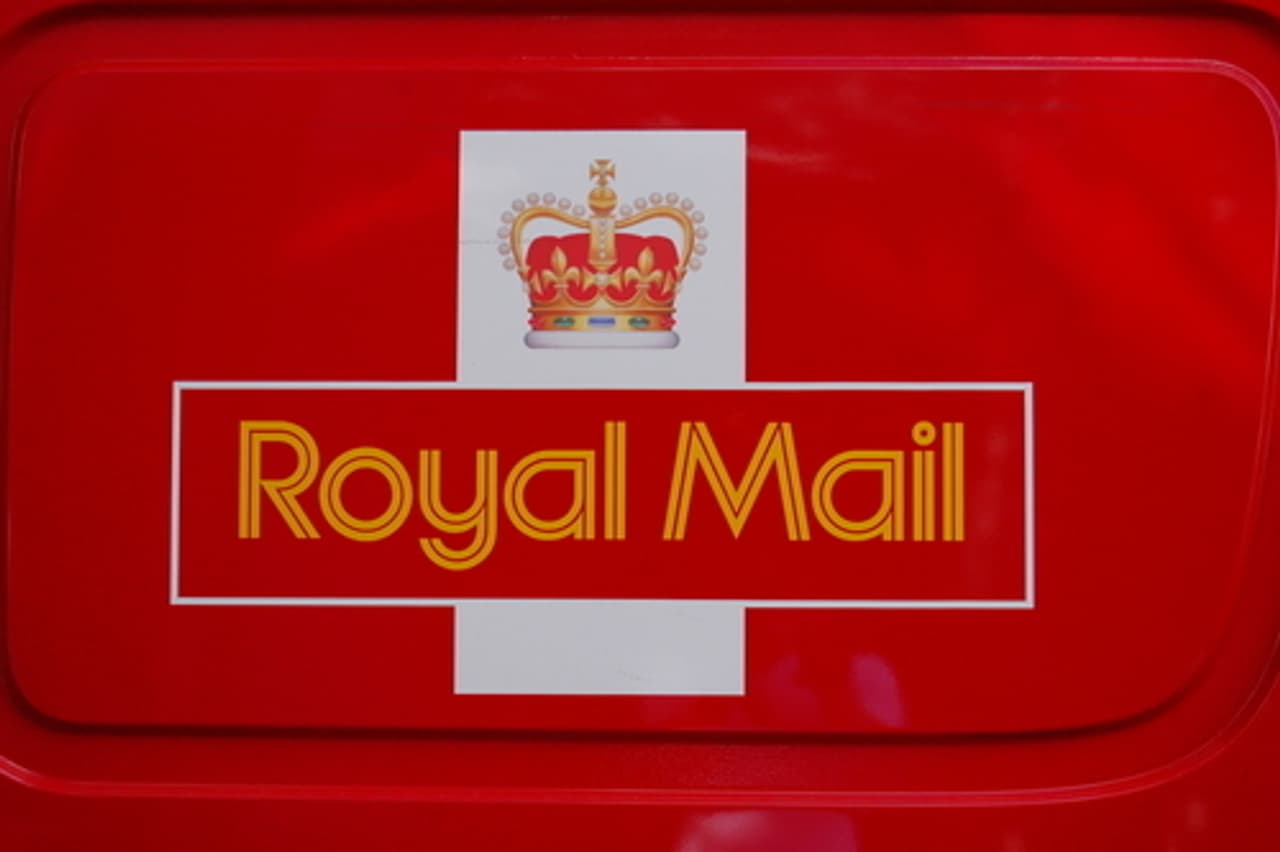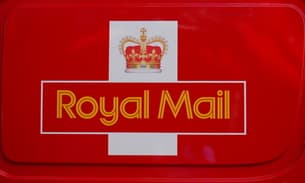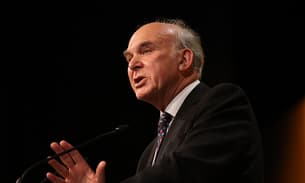
Royal Mail: did the government and bankers short-change Britain by £750m?
Questions are being asked about the government’s float of the Royal Mail. (Image: The Royal Mail via Shutterstock.com)
In a City career spanning more than 50 years, it takes something quite exceptional to shock veteran Square Mile commentator David Buik.
But at precisely 8am on Friday October 11 as preliminary trading in Royal Mail shares began, Buik was “astounded” by a remarkable avalanche of trading activity.
“It was extraordinary,” Buik recalled from the offices of city stockbroker, Panmure Gordon. “I hadn’t seen that intensity for many a year.”
Across the Square Mile, the story was the same. An astonishing 253 million shares – 42% of the entire stock – changed hands during the Royal Mail’s first day of trading.
Vince Cable, the cabinet minister overseeing the biggest flotation of a national asset in nearly 20 years, had publicly expressed his intention that Royal Mail’s new shareholders would be long-term investors.
The business secretary’s ambition for the 498 years old firm evaporated in less than an hour.
Banks, hedge funds, pension firms and sovereign wealth funds, lucky enough to have been allocated Royal Mail stock, sold shares at the earliest opportunity in the biggest City get-rich-quick frenzy for years.
Ferocious demand saw Royal Mail shares, which opened at 330p, spike 38% by close on the first day.
By last Friday, Royal Mail shares closed at 519.5p – up 57% on the float price six months ago.
Selling Royal Mail on the London stock exchange to global investors raised £1.98bn for Treasury coffers.
But the National Audit Office (NAO) earlier this month suggested the government could have secured an additional £750m if the Royal Mail sale was handled better.
So did the government under price the business?
And why did the government’s financial advisers allocate Royal Mail shares to a few privileged investors many of whom made a fast-buck leaving ordinary investors – the public – empty handed?
Put simply, did Vince Cable and his coalition colleagues short-change the taxpayer?
You’d be forgiven for answering “yes” to all of the above. It is why the row over the flotation of Royal Mail refuses to die.
Devastating
Earlier this month, the National Audit Office (NAO) published its devastating report on the government’s handling of the Royal Mail privatisation.
It found the Department for Business Innovation and Skills (BIS) was overly cautious, “placed significant reliance on financial advisers” and could have achieved far better value for the taxpayer.
Tom Stevenson, a market expert at Fidelity
The NAO report never identified the 16 biggest shareholders – the priority investors – who were given preferential treatment by the government.
These 16 cornerstone shareholders were allocated proportionately more stock than other would-be investors. The understanding was that they would hold their investment for the long term. In this way, the Royal Mail would be kept out of the clutches of rapacious hedge funds.
But within a few weeks of the flotation – and in some cases hours – six priority out of the 16 investors had sold all of their stake at a vast profit. Another five had disposed of most of their allocation.
Related story: Unmasked: The city institutions given privileged status in the controversial Royal Mail flotation
The NAO report identifies the priority investors – but only by letters of the alphabet.
This week the issue has reignited with two powerful parliamentary committees separately grill senior government ministers, financial regulators, top civil servants and investment bankers over whether the taxpayer was fleeced.
Yesterday, Cable was forced to defend the valuation placed on Royal Mail in the teeth of angry exchanges with MPs on the Business select committee.
As MPs interrogated Vince Cable and his banking advisers, the Bureau revealed the results of months of research, which showed:
- The likely identity of nine of the powerful global institutions given privileged status which allowed them to buy Royal Mail shares at what now transpires was a knockdown price; and
- evidence that shows banks working on the float of Royal Mail and the government knew the share price was significantly undervalued.
As the new Bureau evidence came to light, Cable gave ground. He said MPs would be allowed to find out the identities of the companies who were given the biggest allocation of shares at Royal Mail. But Cable refused to allow the public to know which investors were treated in this preferential way.
Oversubscribed
Two days before shares started trading, market insiders said the Royal Mail was the most keenly anticipated IPO since the dotcom share bubble 15 years ago.
“It has been many years since investors have been so excited about an IPO,” noted Tom Stevenson, a market expert at Fidelity which has £166bn of assets under management. “Not since lastminute.com in 2000 have so many people been talking about a company joining the stock market.”
By the next morning – the day prior to initial trading – investor appetite for Royal Mail shares was 23 times oversubscribed.
A business with national coverage, instant brand recognition, market dominance and a lucrative property portfolio combined with a guaranteed first year dividend of at least 6% stoked demand to boiling point.
That demand, according to NAO analysis of information from float bank advisers, UBS and Goldman Sachs, was evenly spread between hedge funds – famous for their short-term approach to investing – and “long only” investors” who in theory, would support Royal Mail for years.
To business select committee chairman, Adrian Bailey, that suggests a viable approach would have been to “lock-in” investors for a specified time frame to prevent them cashing in immediately after shares were traded.
But the government rejected this approach. Ministers were told such a move would reduce the attraction of Royal Mail shares to investors.
As it turned out, the list of Royal Mail’s biggest shareholders is today dominated by hedge funds. Chief among them is the Children’s Investment Fund, founded by billionaire Chris Hohn, which bought up 5.8% of the shares in October. Though CIF has since cut its stake to below 5%.
And almost half the shares allocated to just 16 priority investors – who received privileged treatment in the allocation of shares – were sold within a few weeks of the stock market launch at a substantial profit according to Goldman Sachs and UBS information analysed by the NAO.
Growth
To most observers, it was blindingly obvious Royal Mail shares would soar on entry to the London Stock Exchange.
Even equity analysts working for the banks advising on the float could not contain their excitement.
One of the members of this banking syndicate was RBC. RBC was a junior syndicate member responsible for persuading global institutions, ahead of the flotation, to commit tens of millions of pounds to buy Royal Mail shares.
However, as RBC’s investment bankers embarked on their Royal Mail sales pitch to would-be investors, their equity analyst colleagues advised many of the same clients that Royal Mail shares were worth a far higher price – up to a 55% premium – on its 330p float price.
RBC analysts were by no means the only people suggesting the Royal Mail share price was dramatically undervalued.
Barclays, a financial advisor to Royal Mail since 2010, was hired by the government along with RBC to drum up commitments for Royal Mail shares.
Barclays equity analyst analysts, who were not involved in drumming up support for the float, told their investment clients that Royal Mail shares could be worth as much as 420p or 27% higher than the 330p float price.
Barclays’ analysts described Royal Mail as cash-generative, benefitting from reduced regulatory constraints and a much-improved balance sheet thanks in large part to the taxpayer picking up the bulk of the Royal Mail’s pension liability.
Furthermore, Barclays argued, Royal Mail was well placed to capitalise on growth in the parcels market; manage the inevitable decline in letter volumes as people shift to email; and benefit from improved efficiencies.
Undervalued
Though RBC and Barclays had no direct input into the pricing strategy of Royal Mail, if syndicate bank analysts valued Royal Mail higher to its clients than its float price, was this not resounding proof that the company was at risk of being sold on the cheap?
It appears the penny may have dropped in Whitehall.
The NAO reported that on the October 3 – a week before the Royal Mail shares began trading and with share orders eight times oversubscribed – BIS asked its banking advisers if it would be possible to increase the price range.
In response, the Royal Mail global co-ordinators (GloCos) , UBS and Goldman Sachs, advised the price should not increase by more than 20p to 350p per share.
Suggesting a rise would halt the upward momentum of demand, the glocos recommended that the price not be changed.
This advice was backed by Lazard & Co, the government’s independent adviser
The die was cast. Never mind the giant queue that formed for Royal Mail, there was to be no altered course. Royal Mail would be sold but at a price that pleased the city – not the taxpayer.
Connections
William Rucker, the 49-year-old chief executive of Lazard in the UK, is used to controversy. The former Arthur Andersen financier helped US food giant, Kraft emerge victorious from its hostile takeover of UK chocolate icon, Cadbury.
Rucker, alongside Lazard’s UK equity specialists, Alan Custis will appear before Margaret Hodge’s Parliamentary Accounts Committee tomorrow.
Their duel with Hodge will be keenly anticipated.
Unquestionably, Lazard’s connections go to the heart of the British political establishment.
Lord Mandelson, the former business secretary who wanted to privatise the Royal Mail during the dog-days of the Labour administration, is chairman of Lazard International.
Lazard’s UK chairman, is Archie Norman, the former Conservative shadow minister.
A central thrust of the NAO report was that the government accepted the advice of Lazard, far too readily.
Lazard’s £1.5m adviser fee was predicated on achieving a sale of the Royal Mail. It was not, according to the NAO, “ dependent on the valuation”. Yet Lazard was asked to provide advice on pricing.
To the NAO the two roles appeared contradictory .“The taxpayer interest was not clearly prioritised within the structure of the independent adviser’s role,” it concluded.
It has emerged that Lazard’s guidance on what price the Royal Mail should fetch was consistently lower than all other city institutions who offered projections.
Why did the government issue such a potentially contradictory brief to Lazard’s?
Close links
The government’s ownership of Royal Mail is managed by the Shareholder Executive – the body responsible for most of the UK’s state owned businesses.
The Shareholder Executive was the direct point of contact for Lazard’s throughout the six month float process.
Earlier this month it emerged that two of the most senior Shareholder Executive officials previously worked at Lazard’s.
Roger Lowe, the Shareholder Executive’s “senior responsible official” for Royal Mail was a senior Lazard banker for 11 years to 1998. The chief of the Shareholder Executive, Mark Russell, worked at Lazard for two years during the mid-Eighties.
The Bureau can now reveal that the links between Royal Mail and Lazard’s are closer than previously thought.
It has emerged that Royal Mail’s director of investor relations, Catherine Nash, was previously a corporate finance manager at Lazard and worked at the bank for seven years until 1993.
This means that three important players responsible for setting the parameters of the Royal Mail sale were all steeped in Lazard’s culture.
There is absolutely no suggestions of impropriety in any way but a shared way of thinking may partly explain why the Shareholder Executive did not diverge from Lazard’s valuations.
“We consider that departments should examine ways to reduce reliance on professional advisers for judgements affecting taxpayer value,” suggested the NAO.
Privileged access
In the lead up to what has now become the most controversial asset sale the UK has seen this century, hundreds of City institutions registered interest in Royal Mail shares. They were joined by hundreds of thousands of ordinary members of the public.
Most investors, whether big or small, went away almost empty handed.
Shares were in fact marketed very tightly by the float’s global co-ordinators (GloCos), Goldmans and UBS supported by a small number of “bookrunners” and managers.
Banks were tasked with identifying priority investors a year prior to the float. Then just a month before the offering, over the course of a week, firm indications on price were sought in an exercise known as ‘pilot fishing’.
Some 16 institutions were given “priority investor status” by the GloCos. These were, in Vince Cable’s words “the high quality institutions of the type that would form the core of a long-term supportive investor base.”
Priority investors committed to buying Royal Mail at 250p – 80p lower than the offer price, even in the event of threatened industrial action by postal workers and a possible US government debt default.
Those 16 investors were allocated 22% of Royal Mail. A further 17% went to 94 other institutional investors, 180 investors split 3%, approximately 16% was reserved for the public and Royal Mail employees shared 10%. The remainder was retained by the Shareholder Executive.
Unmasked
So who were the privileged 16 – the priority investors that were given the most shares in Royal Mail and who were expected by the government to act as stable, long-term investors?
But 12, perfectly lawfully, sold some or all of their holdings within a few weeks of the float. Of those six priority investors sold out completely so scooping profits running into tens of millions of pounds.
They were replaced by hedge funds including the Children Investment Fund which now holds over 4% of the Royal Mail.
Until now, the identity of the priority investors was one of the City’s many closely guarded secrets. The government in fact blocked freedom of interest requests on the grounds that disclosing who they are would breach commercial confidentiality even though it is clear the majority of these firms have profited handsomely from a public asset.
The Bureau accessed Royal Mail’s register of beneficial interests to examine who owned the biggest slices of the postal operator after it was sold.
By comparing this information to a graphic contained in the NAO report showing changes of shareholdings in the Royal Mail’s 21 largest investors, a picture of the priority investors emerges.
Priority
Four of the largest ‘priority investors’ appear to be sovereign wealth funds belonging to Singapore and Kuwait together with US based Capital Group and Lansdowne, a UK hedge fund.
Lansdowne is known for its close links to the Conservative Party. Its co-founder, Sir Paul Ruddock, retired from the firm but still a substantial beneficiary, has donated over £700,000 to the Conservatives according to Electoral Commission data. Peter Davies, co-head of development strategy at Lansdowne was best man at George Osborne’s wedding. Lansdowne was a short seller of Northern Rock prior to its collapse.
Capital Group, based in California and one of the world’s largest investment managers, had a holding of 20,244,100 shares at the close of trading on October 15. Just one week later it had only 3,060,000 which would have yielded a potential profit of tens of millions in the space of seven days.
A likely priority investor is ‘Gazelle’ with an allocation of 16m shares initially worth £52.8. Gazelle has no identifying information on Royal Mail’s shareholder register other than a Cayman Islands address. The Bureau approached an investment adviser with links to a hedge fund called Gazelle but an executive denied owning shares in Royal Mail.
Two other apparent priority investors that sold a tranche of their holdings at a swift profit appear to include Och-Ziff, the US alternative asset manager who declined to comment, and UK pension firm, Standard Life.
Documents passed to the Bureau show that Standard Life made a £25.8m profit on its allocation of Royal Mail shares.
The other seven priority investors sold out completely, or at least down to a tiny holding, within a few weeks of the float and some may have sold out on the first day of dealings. The first available shareholder register is for October 15, a few days after dealing started on October 11, so it is difficult to establish initial shareholdings which would identify the other seven.
However, among those selling out of Royal Mail at a substantial profit in the first few weeks of dealings include the George Soros hedge fund, Quantum Partners.
Other companies with large holdings on October 15 include fund managers Henderson and investment manager company Blackrock. Press reports have speculated that Blackrock was a priority investor.
Never again?
So were those institutions lucky enough to get hold of Royal Mail favoured clients of the banks organising the sale? Was it a case of the Square Mile looking after its own?
The suspicion won’t go away that City financiers ill advised politicians and officials to the detriment of the taxpayer.
Lazard’s and Goldman Sachs declined to comment on issues raised by the Royal Mail float. UBS failed to respond.
The government rejects any suggestion that it was locked into a rigid timeframe that led to the public losing out on hundreds of millions of pounds.
“Our primary objective was to secure the future of the universal postal service by completing a sale of a majority stake in Royal Mail in order for the company to be able to access capital markets,” a spokesman said.
“A failed sale would have been a very poor outcome for the taxpayer and it would have been wrong to take excessive risks with a company that provides a vital public service across the whole of the UK and employs 150,000 people. We secured a sale at the highest price that we had evidence to support, based on assessments of the company’s value and market conditions at the time of the sale.”
Whoever you believe, there are indications that more government assets including bank stakes will soon be offered up for sale.
Among them are said to be Eurostar and Urenco, the uranium enrichment company partially owned by the British and Dutch governments.
In a time of deep government spending cuts, can the government afford to under-price the UK’s assets while at the same time allowing banks and hedge funds – responsible for the economic downturn – to profit at our expense?
Perhaps that is the most important question coming out of this deeply controversial saga.
Royal Mail Priority Investors The Bureau has compared data from Royal Mail’s register of beneficial interests, which shows the owners of the firm’s shares, with information in the recent NAO report, where the Priority Investors are only identified by letters of the alphabet. This analysis has given us a new insight into who some of the ‘favoured few’ to profit from the sale were – and how big a slice they got of the UK’s 500-year-old postal provider. Likely Priority Investors




